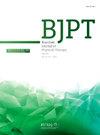The relationship between lower limb alignment and physical fitness in children aged 10–12: A sex-specific analysis using the ALPHA-fitness test battery
IF 3.2
3区 医学
Q1 ORTHOPEDICS
引用次数: 0
Abstract
Background
Physical fitness predicts health outcomes during childhood and later life. While the influence of obesity on physical fitness is well established, the impact of lower limb alignment (such as knee alignment, foot posture, and plantar footprint) on physical fitness has been less explored.
Objective
To evaluate the relationship between lower limb alignment, body mass index (BMI), and physical fitness in children aged 10–12 with a sex-specific analysis.
Methods
Fifty-nine children (33 girls, 26 boys) participated in this cross-sectional study. Knee alignment (genu valgum, normal), foot posture (using FPI-6), and plantar footprint (classified by the Hernández-Corvo method) were measured. BMI was calculated to classify children into underweight, normal weight, overweight, and obese. Physical fitness was assessed using the ALPHA-Fitness Test Battery, measuring cardiorespiratory fitness, muscular strength, and speed/agility. Multiple linear regression models were developed to analyse the associations between variables.
Results
Sex and BMI were significant predictors of muscular and cardiorespiratory fitness, with boys presenting better muscular and cardiorespiratory fitness. Larger BMI was associated with poorer muscular fitness (p = 0.003). Knee alignment in the frontal plane was not a predictive factor in physical fitness. Pronated foot was a weak predictor of lesser muscular fitness (p = 0.041). Plantar footprint did not significantly predict physical fitness.
Conclusions
Sex and BMI were the main determinants of physical fitness. Despite some musculoskeletal factors having some influence, their relationship with physical fitness is not as direct as sex and BMI. Clinical practice should prioritise weight control in the interventions for physical fitness in children, considering sex differences.
10-12岁儿童下肢直线与身体健康的关系:基于alpha -体能测试的性别分析
身体健康可以预测儿童时期和以后生活的健康状况。虽然肥胖对身体健康的影响是众所周知的,但下肢对齐(如膝关节对齐、足部姿势和足底足迹)对身体健康的影响却很少被探索。目的探讨10-12岁儿童下肢直线、身体质量指数(BMI)与身体健康的关系,并进行性别分析。方法59例儿童(女孩33例,男孩26例)参与横断面研究。测量膝关节对齐(膝外翻,正常)、足部姿势(使用FPI-6)和足底足迹(通过Hernández-Corvo方法分类)。通过计算BMI指数,将儿童分为体重不足、体重正常、超重和肥胖。使用ALPHA-Fitness Test Battery评估身体健康,测量心肺健康、肌肉力量和速度/敏捷性。建立了多元线性回归模型来分析变量之间的关联。结果性别和BMI是肌肉和心肺健康的显著预测因子,男孩表现出更好的肌肉和心肺健康。BMI越大,肌肉健康状况越差(p = 0.003)。膝关节额平面的排列不是身体健康的预测因素。内翻足是较弱的肌肉适应度预测因子(p = 0.041)。足底足迹对身体健康没有显著预测作用。结论性别和BMI是体质的主要决定因素。尽管一些肌肉骨骼因素有一定的影响,但它们与身体健康的关系并不像性别和体重指数那样直接。临床实践应在考虑性别差异的情况下,在儿童体质干预措施中优先考虑体重控制。
本文章由计算机程序翻译,如有差异,请以英文原文为准。
求助全文
约1分钟内获得全文
求助全文
来源期刊
CiteScore
6.10
自引率
8.80%
发文量
53
审稿时长
74 days
期刊介绍:
The Brazilian Journal of Physical Therapy (BJPT) is the official publication of the Brazilian Society of Physical Therapy Research and Graduate Studies (ABRAPG-Ft). It publishes original research articles on topics related to the areas of physical therapy and rehabilitation sciences, including clinical, basic or applied studies on the assessment, prevention, and treatment of movement disorders.

 求助内容:
求助内容: 应助结果提醒方式:
应助结果提醒方式:


